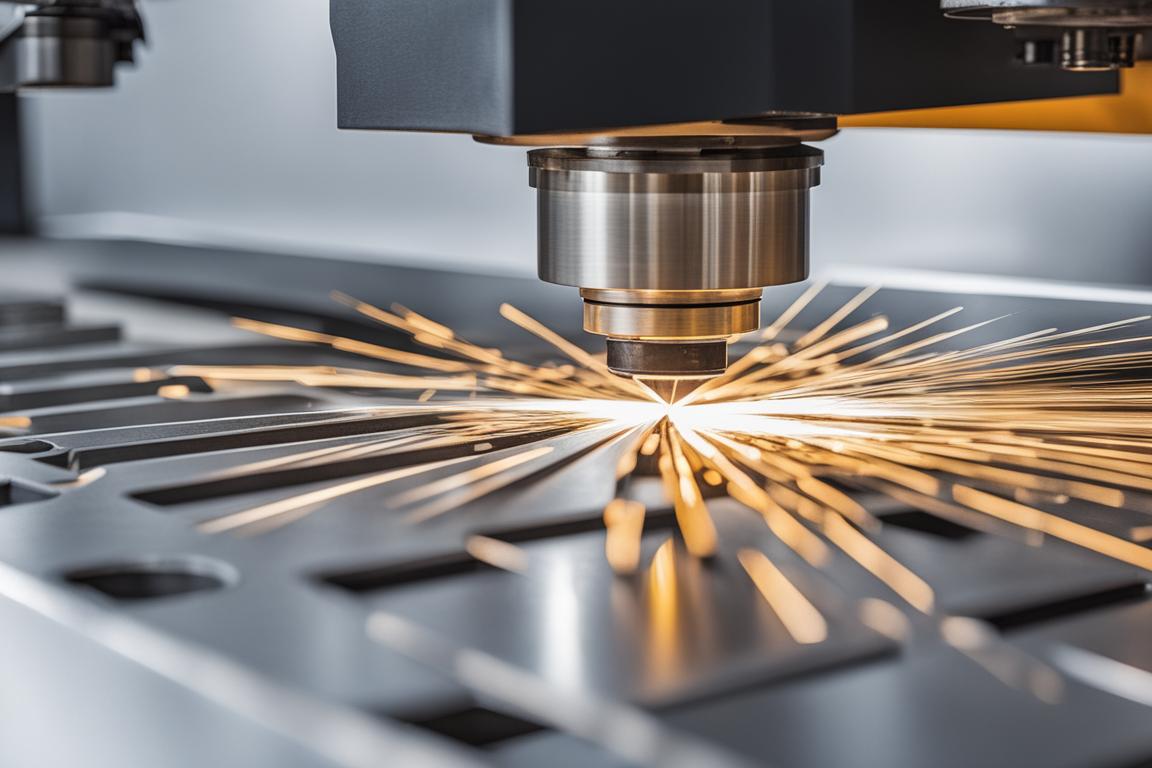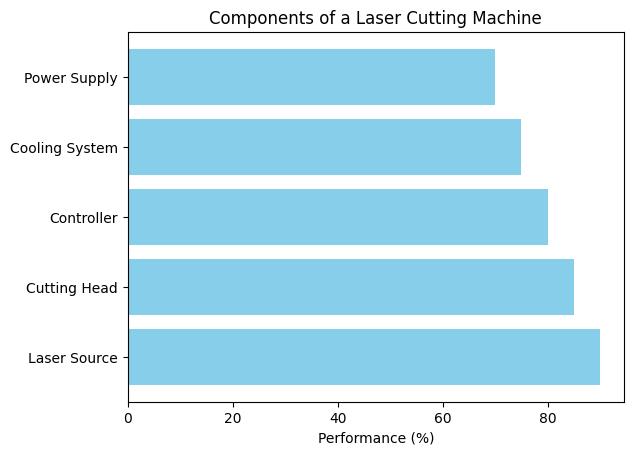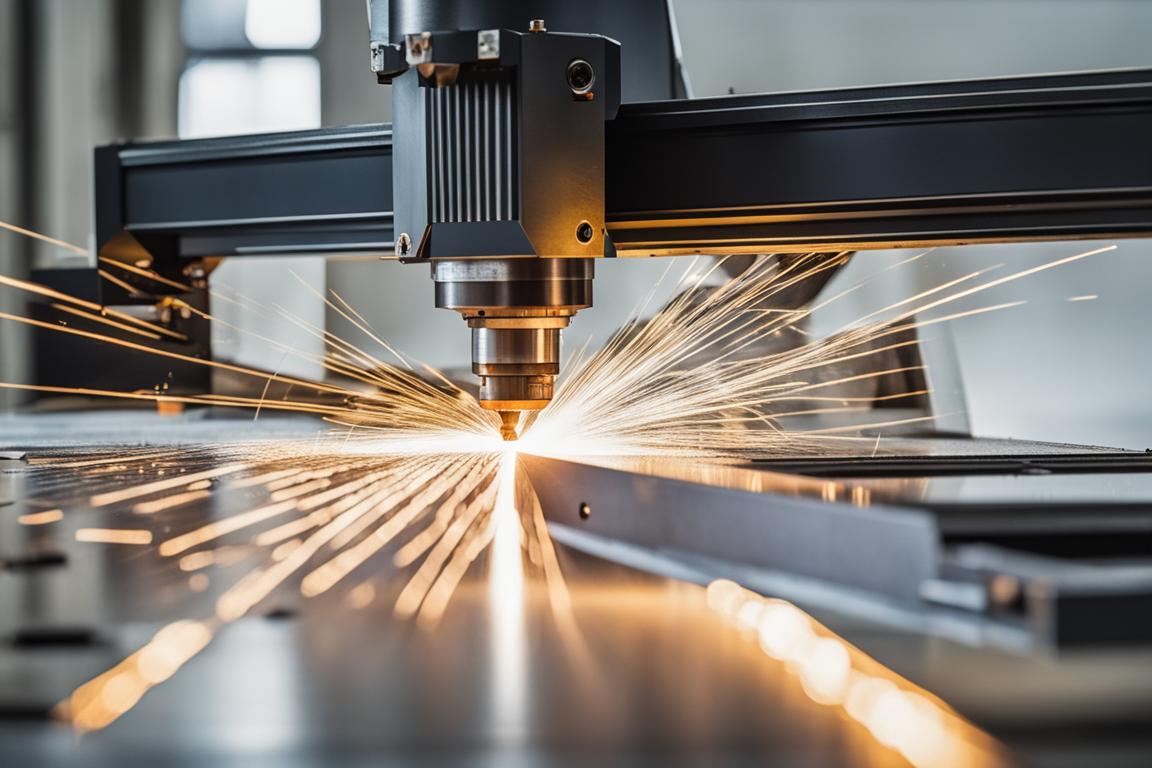What You Will Learn About Laser Cutting in Precision Sheet Metal Work
By reading this article, you will learn:
– How laser cutting works and its significance in precision manufacturing and fabrication.
– The advantages and applications of laser cutting in various industries and materials it is compatible with.
– The impact of laser cutting on precision manufacturing and the factors influencing the process.
Laser cutting, a transformative technology in precision manufacturing, provides exceptional accuracy and speed in cutting various materials. This comprehensive guide aims to deepen the understanding of laser cutting technology, its applications, advantages, and the future trends shaping this innovative field.

What is Laser Cutting and Why is it Essential?
Definition of Laser Cutting
Laser cutting is a technology that utilizes a high-powered laser to precisely cut and engrave materials, often used in industrial manufacturing for its ability to produce intricate designs and complex shapes.
Significance in Precision Manufacturing and Fabrication
Laser cutting plays a crucial role in achieving high levels of precision and accuracy, making it indispensable in the field of precision sheet metal work. Its versatility allows for cutting a wide range of materials, catering to various industries.
Revolutionizing Industries: Precision, Speed, and Versatility
Laser cutting has revolutionized industries by offering unparalleled precision, speed, and versatility in material fabrication. It has become integral in manufacturing processes for industries such as aerospace, automotive, electronics, and medical devices due to its ability to produce high-quality components with intricate details.

Understanding Laser Cutting Technology
Laser cutting technology is a complex yet fascinating process that underpins modern precision manufacturing. Understanding how laser cutting works and the different types of lasers used is crucial to appreciating its significance in the industry.
How Laser Cutting Works
Overview of Laser Cutting Process
Laser cutting involves using a focused, high-powered laser beam to cut through materials. The intense heat of the laser beam melts, burns, or vaporizes the material along the predetermined cutting path, resulting in precise and clean cuts.

Use of High-Powered Lasers
High-powered lasers, such as CO2 lasers and fiber lasers, are commonly used in laser cutting processes due to their ability to deliver the intense energy required for efficient material cutting.

Types of Lasers
CO2 Lasers
| Application | Description |
|---|---|
| Aerospace Parts | Laser cutting is used to create intricate and lightweight components for aircraft and spacecraft, meeting stringent precision requirements. |
| Automotive Components | Laser cutting facilitates the production of precise and complex parts for vehicles, ensuring high accuracy and repeatability. |
| Electronics Enclosures | Laser cutting is employed to manufacture intricate enclosures and components for electronic devices, maintaining tight tolerances. |
| Medical Instruments | Laser cutting enables the fabrication of intricate and sterile components for medical instruments, ensuring precision and cleanliness. |
CO2 lasers are gas lasers that produce a high-powered infrared beam, making them suitable for cutting non-metal materials and certain types of metals.
Fiber Lasers
Fiber lasers use optical fibers to amplify light, generating a concentrated and powerful laser beam. They are highly efficient for cutting metal materials with precision and speed.
In the context of precision sheet metal work, laser cutting technology has revolutionized the manufacturing and fabrication processes, enabling the production of intricate and complex components with exceptional precision and speed. Incorporating real-life examples and insights from industry experts would further enhance the practical relevance and credibility of the content.
FAQ
Who uses laser cutting in precision sheet metal fabrication?
Precision sheet metal fabricators use laser cutting for accurate and intricate metal cutting.
What materials can be cut with laser cutting in sheet metal fabrication?
Laser cutting can cut a variety of materials including stainless steel, aluminum, and copper.
How does laser cutting ensure precision in sheet metal fabrication?
Laser cutting uses a focused beam of light to melt, burn, or vaporize material, resulting in precise cuts.
What if I need a different type of cutting method for my sheet metal project?
While laser cutting is precise, other methods like waterjet cutting may be more suitable for specific projects.
How can I ensure the best results with laser cutting in sheet metal fabrication?
To ensure the best results, provide accurate design files and consult with experienced fabricators.
What are the advantages of laser cutting in precision sheet metal fabrication?
Laser cutting offers high precision, minimal material waste, and the ability to cut complex designs, making it a preferred method in precision sheet metal fabrication.
